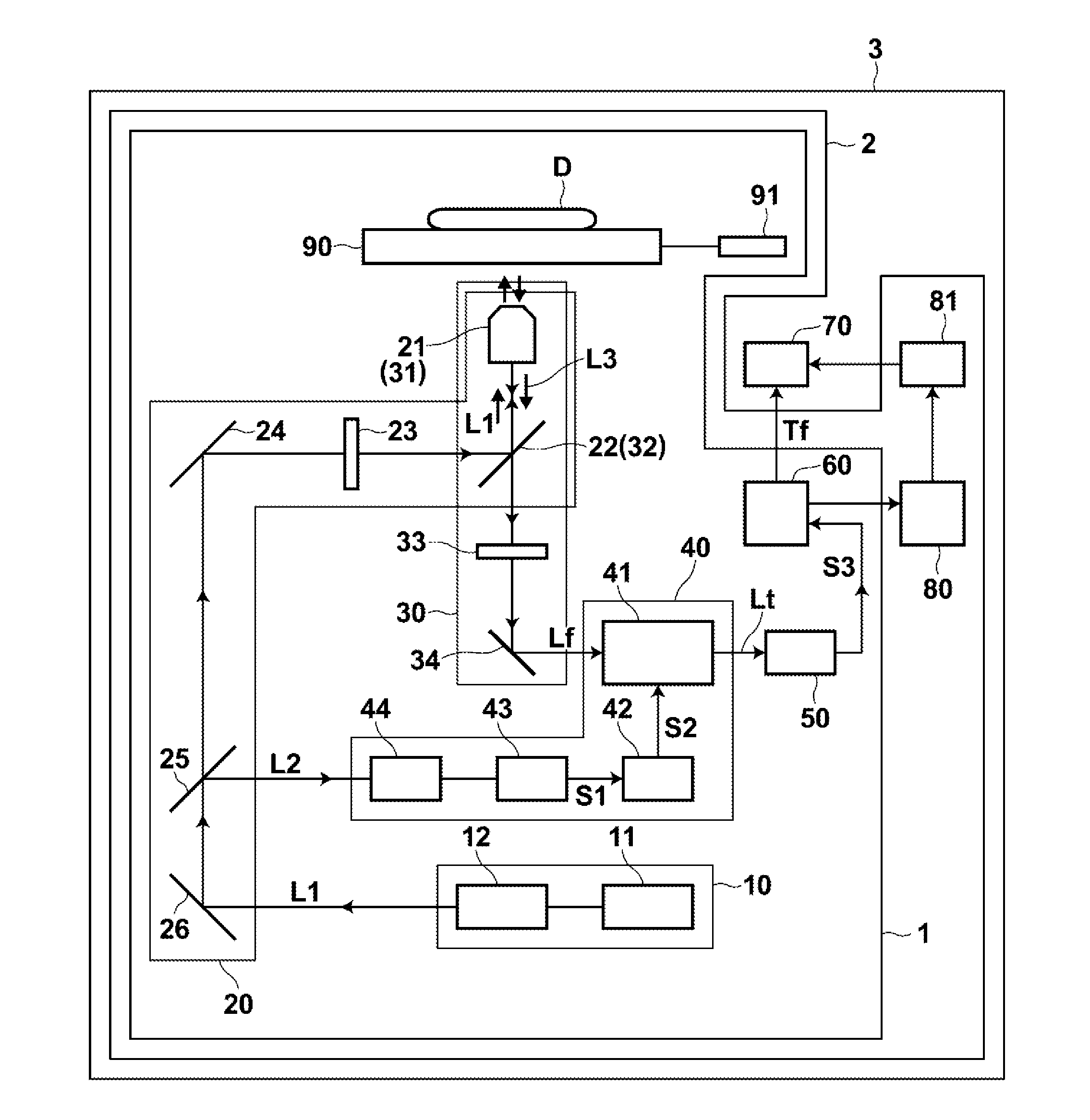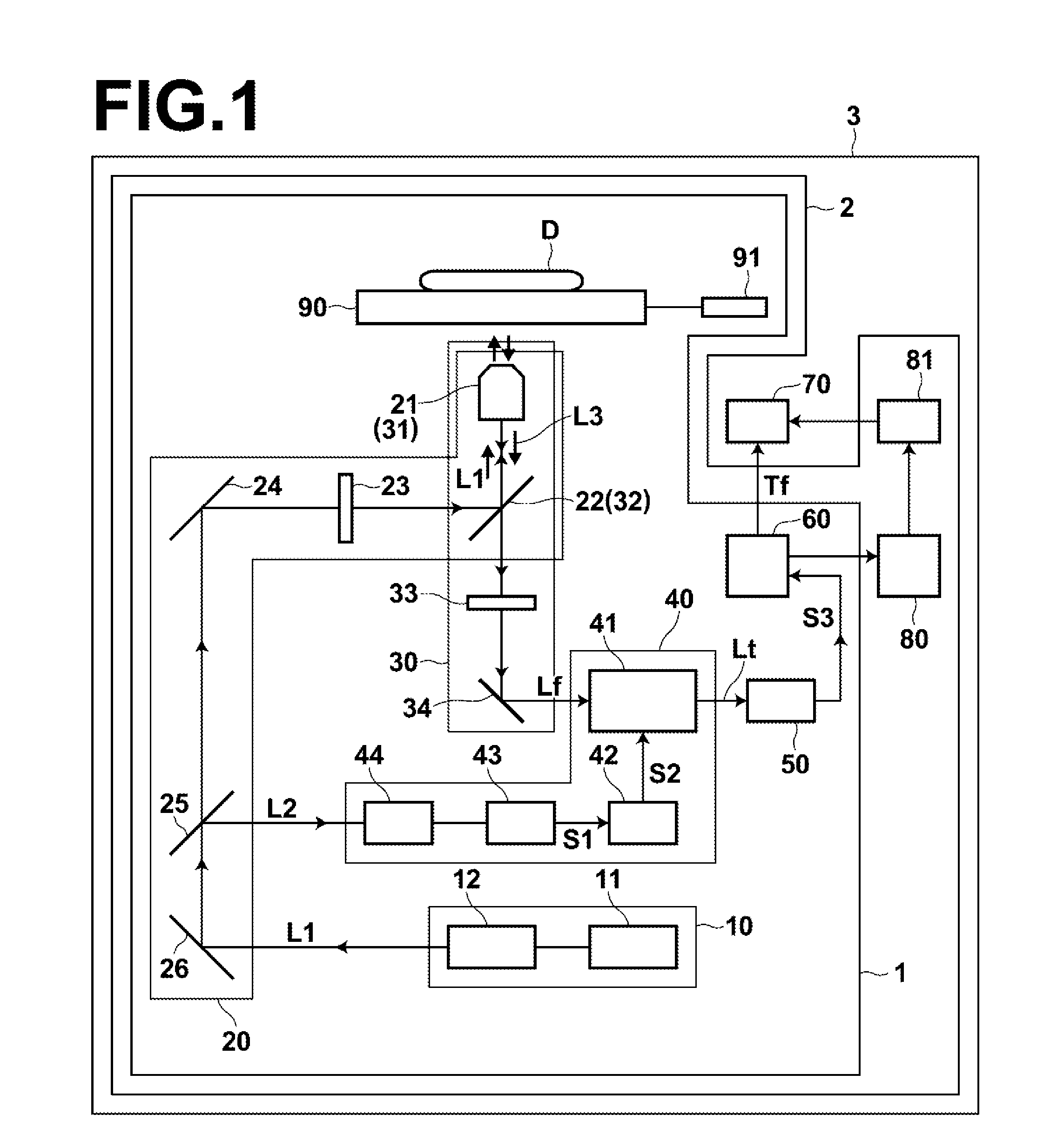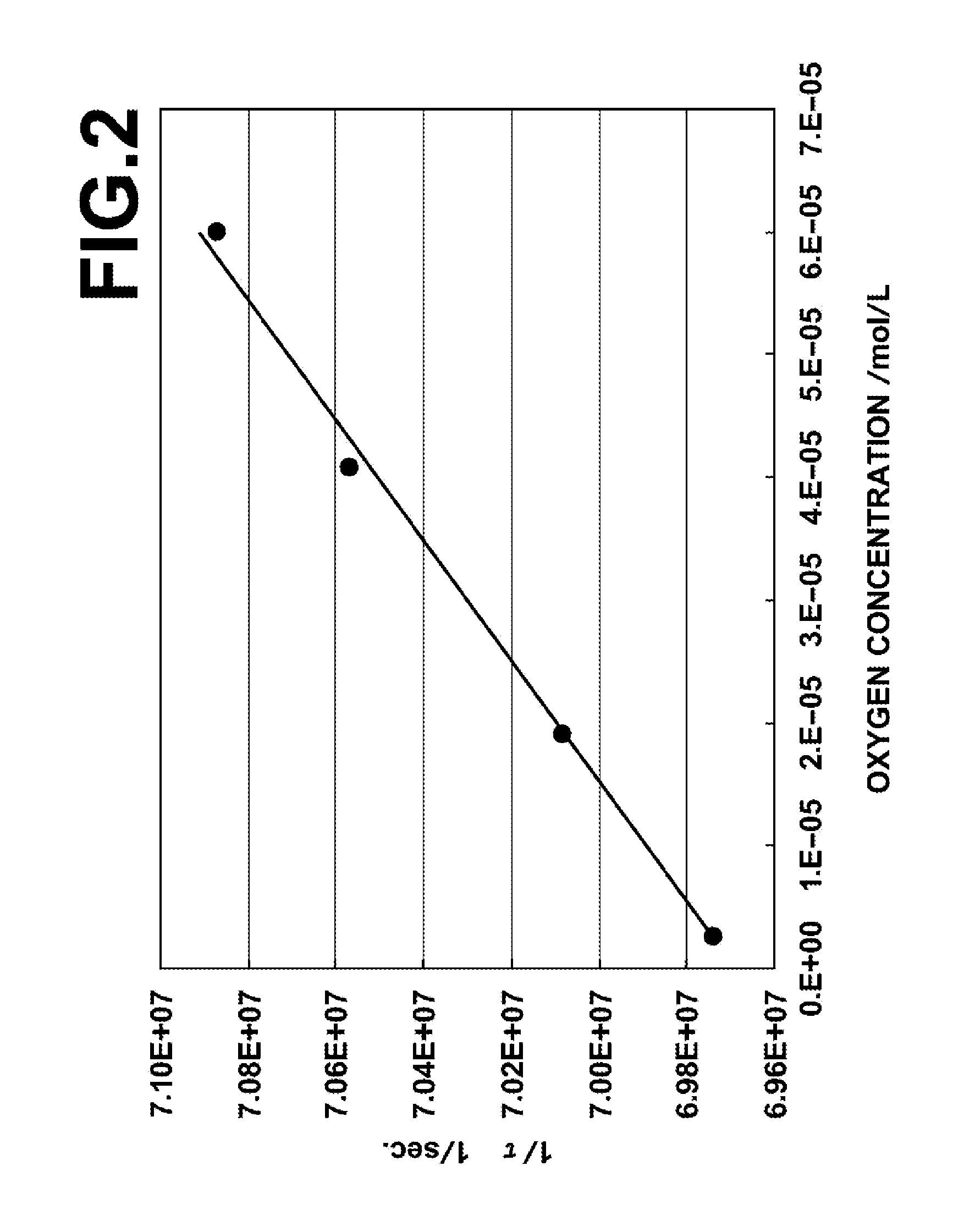Low-oxygen-region-analysis method and apparatus by time-resolved-measurement of light-induced-autofluorescence from biological-sample
a technology of low-oxygen region and light-induced fluorescence, which is applied in the field of low-oxygenregion analysis methods and apparatuses by time-resolved measurement of light-induced fluorescence from biological samples, can solve the problems of insufficient reliability of methods, difficult to achieve excellent quantitative detection and high-sensitivity detection, and damage to the target of measuremen
- Summary
- Abstract
- Description
- Claims
- Application Information
AI Technical Summary
Benefits of technology
Problems solved by technology
Method used
Image
Examples
first embodiment
of Oxygen Concentration Measurement Apparatus (Measurement Apparatus) (Microscope)
An oxygen concentration measurement apparatus and an oxygen concentration measurement method according to a first embodiment of the present invention will be described with reference to drawings. FIG. 1 is a schematic diagram illustrating the configuration of an oxygen concentration measurement apparatus 1 according to an embodiment of the present invention. In FIG. 1, each unit is illustrated at an appropriate scale so as to be easily recognized.
As illustrated in FIG. 1, the oxygen concentration measurement apparatus 1 outputs pulsed excitation light L1 (hereinafter, referred to as excitation light L1) to substance D to be measured, which is living matter, by an excitation light illumination means 20. Further, the oxygen concentration measurement apparatus 1 obtains fluorescence by receiving light L3 by a light receiving means 30. The light L3 includes fluorescence Lf emitted, by illumination with the...
second embodiment
“Second Embodiment of Oxygen Concentration Measurement Apparatus (Fiber Probe)”
Next, an oxygen concentration measurement apparatus according to another embodiment of the present invention will be described. The oxygen concentration measurement apparatus 1 in the first embodiment is a microscope. However, an oxygen concentration measurement apparatus 10 in the second embodiment is a fiber probe. In the descriptions of the present embodiment and the drawings, the same signs will be assigned to elements that have substantially the same functions as those of the first embodiment, and explanations will be omitted.
As illustrated in FIG. 7, the structure of the oxygen concentration measurement apparatus 10 is similar to the structure of Embodiment 1, except that the objective lens 21 (31) in the first embodiment is replaced by a bundle fiber 21′ (31′) in the second embodiment.
In the bundle fiber 21′ (31′), an optical fiber 200 for illumination is arranged substantially at the center. The o...
example 1
Oxygen concentration of a cultured HeLa cell was measured by using a microscope-type oxygen concentration measurement apparatus illustrated in FIG. 1. FAD (Flavin Adenine Dinucleotide) was used as an autofluorescent material to be excited, and SHG light of a titanium sapphire laser with a pulse width of 1 picosecond was used as excitation light. Further, the wavelength of the excitation light was adjusted so that the wavelength became 450 nm, which is the excitation wavelength of FAD. At this time, the pulse energy of excitation light was 25 nJ.
The pH of HeLa cells was adjusted to pH 7.4 in culture medium, and two kinds of HeLa cell with oxygen concentration of 5 mmHg and oxygen concentration of 40 mmHg were prepared. Further, fluorescence lifetimes of the two kinds of HeLa cell were measured for fluorescence wavelength of 520 nm. In living matter, FAD is present in a protein bond state and in a free state. However, FAD in the free state the fluorescence lifetime of which was longer...
PUM
 Login to View More
Login to View More Abstract
Description
Claims
Application Information
 Login to View More
Login to View More - R&D
- Intellectual Property
- Life Sciences
- Materials
- Tech Scout
- Unparalleled Data Quality
- Higher Quality Content
- 60% Fewer Hallucinations
Browse by: Latest US Patents, China's latest patents, Technical Efficacy Thesaurus, Application Domain, Technology Topic, Popular Technical Reports.
© 2025 PatSnap. All rights reserved.Legal|Privacy policy|Modern Slavery Act Transparency Statement|Sitemap|About US| Contact US: help@patsnap.com



